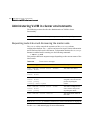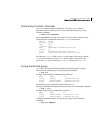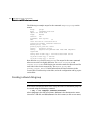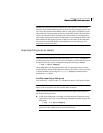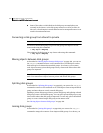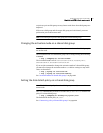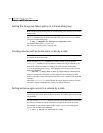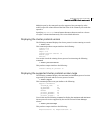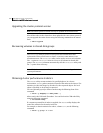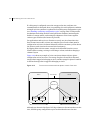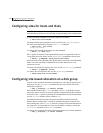
428 Administering cluster functionality
Administering VxVM in cluster environments
Upgrading the cluster protocol version
Note: The cluster protocol version can only be updated on the master node.
After all the nodes in the cluster have been updated with a new cluster protocol,
you can upgrade the entire cluster using the following command on the master
node:
# vxdctl upgrade
Recovering volumes in shared disk groups
Note: Volumes can only be recovered on the master node.
The vxrecover utility is used to recover plexes and volumes after disk
replacement. When a node leaves a cluster, it can leave some mirrors in an
inconsistent state. The vxrecover utility can be used to recover such volumes.
The -c option to vxrecover causes it to recover all volumes in shared disk
groups. The vxconfigd daemon automatically calls the vxrecover utility with
the
-c option when necessary.
Note: While the vxrecover utility is active, there can be some degradation in
system performance.
Obtaining cluster performance statistics
The vxstat utility returns statistics for specified objects. In a cluster
environment, vxstat gathers statistics from all of the nodes in the cluster. The
statistics give the total usage, by all nodes, for the requested objects. If a local
object is specified, its local usage is returned.
You can optionally specify a subset of nodes using the following form of the
command:
# vxstat -g diskgroup -n node[,node...]
where node is the CVM node ID number. You can find out the CVM node ID by
using the following command:
# vxclustadm nidmap
If a comma-separated list of nodes is supplied, the vxstat utility displays the
sum of the statistics for the nodes in the list.
For example, to obtain statistics for node 2, volume vol1,use the following
command:
# vxstat -g group1 -n 2 vol1



